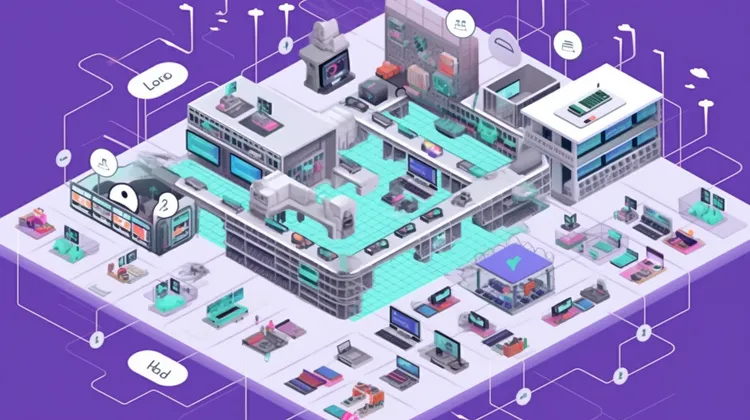
Interoperable Network: L1 Secure and Efficient with Bitcoin, Ethereum, and More
In the ever-evolving world of cryptocurrencies, the need for interoperable networks has become more evident than ever. As new blockchain platforms emerge, it is crucial to establish secure and efficient connections among them to enable seamless communication and transfer of assets. One such network that is revolutionizing this landscape is the L1 network.
The L1 network, also known as Layer 1 network, is an innovative solution that aims to create a secure and efficient interoperable network among various blockchain platforms, including Bitcoin, Ethereum, and more. Its primary goal is to enable easy and streamlined communication among these different networks, allowing users to transfer assets seamlessly from one blockchain to another.
Security is a crucial aspect of any blockchain network, and L1 network ensures that it provides the highest level of security for all transactions. By leveraging advanced cryptographic techniques and consensus mechanisms, it establishes a trustless environment where users can transact with confidence. This robust security framework not only protects against potential attacks but also ensures the integrity of the network.
Efficiency is another aspect that sets L1 network apart from others. It utilizes cutting-edge technologies such as sharding, which enables the network to process transactions in parallel, significantly increasing the network’s throughput. This high throughput capacity allows for faster transaction confirmation times, enhancing the overall user experience.
Moreover, L1 network incorporates advanced scalability solutions, enabling it to handle increasing transaction volumes without compromising performance. By implementing techniques like state channel technology and off-chain transactions, it reduces the network’s congestion, ensuring smooth and efficient operations even during peak times.
One of the significant advantages of the L1 network is its compatibility with multiple blockchain platforms. It acts as a bridge between different chains, facilitating the exchange of assets and information across networks. For example, with the L1 network, users can seamlessly transfer Bitcoin to Ethereum or vice versa, without the need for complex and time-consuming processes.
Furthermore, L1 network eliminates the need for intermediaries, making transactions more cost-effective for users. Instead of relying on third-party services or centralized exchanges, users can directly transact with different blockchains, reducing fees and increasing financial sovereignty.
The L1 network also promotes innovation and collaboration among blockchain platforms. By interconnecting different chains, it encourages developers to create decentralized applications (dApps) that can be utilized across multiple networks. This interoperability fosters a rich ecosystem where developers can leverage the unique features of each blockchain while benefiting from a broader user base.
Notably, the L1 network is continuously evolving to adapt to the changing needs of the blockchain community. It actively incorporates feedback from users, developers, and industry experts to improve its functionality and address any potential challenges. This commitment to constant innovation ensures that the network remains at the forefront of interoperability solutions in the blockchain space.
In conclusion, the L1 network provides a secure and efficient interoperable network that connects different blockchain platforms, including Bitcoin, Ethereum, and more. With its emphasis on security, scalability, and compatibility, it enables seamless communication and asset transfer among various chains. By eliminating intermediaries and promoting innovation, it empowers users to embrace the true potential of blockchain technology. As the blockchain ecosystem continues to expand, the L1 network serves as a critical piece of infrastructure, facilitating collaboration and revolutionizing the way we interact with cryptocurrencies and decentralized applications.
4 thoughts on “Interoperable Network: L1 Secure and Efficient with Bitcoin, Ethereum, and More”
Leave a Reply
You must be logged in to post a comment.
Sharding and off-chain transactions? Sounds like a recipe for disaster. No thanks!
Collaboration among blockchain platforms? I’ll believe it when I see it. All I see is competition, not cooperation.
I’m tired of hearing about all these new networks claiming to be the best. They always fall short in the end. 🙄
The L1 network is just another piece of infrastructure that will be forgotten in a few years. Nothing special here. 🤷♀️